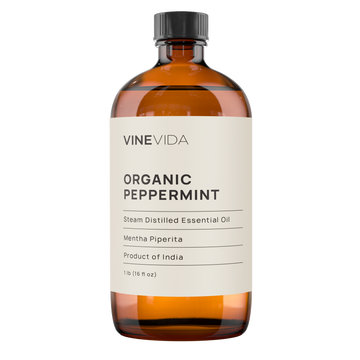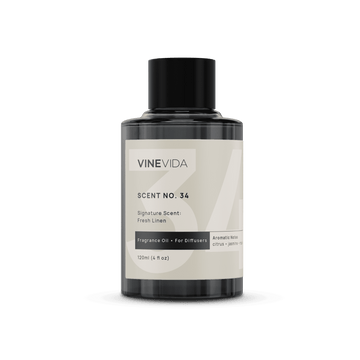Education Is At The Heart Of VINEVIDA
Here at VINEVIDA, we are passionate about educating our customers about using our products safely. We believe that if you understand how our products work, you’ll get more from your purchases. When people are aware of how best to use their products, not only is it safer, but they are more confident and have less waste. You protect your family, save money, reduce waste on unnecessary mistakes, and do your bit to help the planet thrive! We are passionate about showing you how to find safety information on the Vinevida website, because it is the most ethically sustainable way for us to work together.
Taking The First Steps

When you first explore our website, it can be difficult to discern which oil is best for what.
So we produced. It should answer some of your most commonly asked questions. That should help you unravel most mysteries.
In that post, we looked at essential oils and carrier oils. We explored the differences between them and how to use them safely and effectively.
That post also addressed questions like ‘Can I use this in my diffuser?' and 'How to use VINEVIDA oils for diffuser? ’? We highlight individual types of diffusers, explain how they work, and then recommend which fragrance oil for each.
You may have noticed that we now have a large range of fragrance oils too. These have their own applications and safety information. These can be found in their own section in How To Use VINEVIDA Oi, too. VINEVIDA stocks two different types of fragrance oils.
- DIFFUSER Fragrance Oil is formulated especially for Nebulizing or Cold Air Diffusers.
- SOAPS & CANDLES Fragrance Oil has been specifically designed for making products with rigorous processes like soaps and candles, which require high heat tolerances. They can also be used for cosmetics, skin care & toiletries, and even for making your own household cleaning products.
Again, that article details their recommended applications and shows you how to use both of them correctly.
Fragrance Oils and Essential Oil Safety
We encourage you to have a go at making products for yourself, your family, and friends. It is a very satisfying hobby, which many people successfully turn into businesses. Wherever you are on your fragrant journey, we are here to help you.
Ultimate Responsibility

It feels incredibly empowering to design and formulate your own projects. But a big learning curve of that process is learning to source ingredients safely, and that means learning to understand and follow IFRA safety guidelines.
As you would expect, this is especially important if you are formulating products to gift or sell to customers. You spend all of that time making lovely products, but as soon as they leave your hands, those products are out of your control.
The crux of the matter is that ultimately, you are responsible for the content of the recipe and its formulation.
This should always be at the forefront of your mind.
Trust The Professionals

The internet is crowded with pages written by bloggers and hobbyists who do not have any formal training or qualification in aromatherapy. What this means is that many know the healing properties of what an essential oil can do, but they may not know the nuances of how it might interact with certain conditions you have, or indeed that it is one you should be more careful with on the skin.
Often, these pages utilize advice as if all essential oils are equal, and that simply is not so.
For example, how many times have you seen potential dermal irritants like Cinnamon Bark essential oil being casually added because it ‘smells nice’ in beauty recipes?
Cinnamon Bark has a maximum safety dilution rate of a minuscule 0.07%.
- A teaspoon of oil is approximately 100 drops
- 7 drops in 100 drops (5ml) is 7%
- In 1000 drops is 0.7% (50ml)
- In 10,000 drops is 0.07% (500ml)
When formulating cosmetics, skincare, toiletries, or anything to be used topically (i.e., on the
skin,) It is crucial that you can be confident about the recipe’s safety.
Only trust other people’s recipes written by fully trained industry professionals.
Learn How To Source and Understand IFRA Safety Data for Yourself

If you do find a recipe you like, but you have a couple of niggling doubts, you can always check safety data for yourself.
Any safety information you need is at your fingertips on the Vinevida.
Each product page links to its relevant safety documents so you can work out the relevant safety information for yourself.
These files bring together several sources of information for a variety of different people.
For example, you may find documents that talk about how flammable the oil is. This is mainly for people who are going to have the oils in their lorry to dispatch them to their customers. So these will not have any bearing on your production.
We also supply maximum dilution as related in Essential Oil Safety for Health Professionals, written by Robert Tisserand and Rodney Young in 2013. These recommendations are based on the most up-to-date information we have in the industry regarding possible irritation or negative effects that have been reported.
We also use and supply IFRA guidelines.
IFRA is the International Fragrance Regulation Authority. They are a European body that analyzes each constituent within an oil to gauge and predict any possible negative effects an oil has.
Each vat of oil we buy will have slightly different amounts of these natural chemicals, and so our guidelines for how much of a certain oil can be used might vary, based on the fluctuations of these chemicals. Therefore, our aromatherapist calculates new IFRA recommendations on each vat we buy to ensure we have the safest guidelines for you possible.
These guidelines should not be confused with GC/MS reports ( Gas Chromatography/ Mass Spectrometry reports, which tell you how much of each chemical there is). Every company has a legal requirement to supply GC/MS reports. Do not trust or buy from companies that cannot, or will not, supply you with this safety data. You have a right to ask for it and to be supplied with it.
However, we supply IFRA documentation to large European fragrance houses who require it. We choose to make them freely available because we feel everyone should be empowered with the best safety information available to them.
As an ongoing project, we also create “Layperson’s safety sheets” which bring together all the information, including how much of each oil you can safely use on younger members of your family, as well as on your pets. Again, this is not a legal requirement; it is a sign of how valuable your custom is.
Be mindful that it is your responsibility to find and consult that safety information and to put it into practice! The legal standpoint on this is that ignorance is not a defense.
IFRA Safety Is Not The Whole Picture
An IFRA recommendation is based on how certain constituents in an oil might act as allergens. These usually respond to topical usage. So what that means is, it is a whole lot of kerfuffle about whether it might irritate your skin.
But what about how it might interact with drugs you are on, or any existing conditions like epilepsy or even pregnancy...?
An IFRA guideline does not concern itself with that - it’s only interested in whether it might irritate the skin (well, actually a bit more than that, but for this argument…)
So, when you look at the guidelines for some oils, they do not contain any allergens. So the guideline will say “No restriction”.
However, you still need to dilute the essential oil and take the other issues into account. You can find the answers to these in the Layman’s Safety Synopsis. Again, you find these under the picture in the product listing.
If you look at both documents, you will get enormous insights into what bits are safe about the oil and where you need to be more cautious.
How To Find Our IFRA Safety Documents
VINEVIDA safety documents are easy to locate.
- Open the web page of your chosen Fragrance Oil or Essential Oil.
- A navigation bar will appear underneath the main product image.
- Find the link entitled DOCUMENTS (Usually 2nd from the right-hand side).
- Click on it and open it up. It may open up several different files.
- You want the file called: IFRA STATEMENT. Click on it and it will open up the file in a new browser tab.
- The figures give you the ‘maximum recommended safety dilution rates’ in the relevant categories.
Note: The figures are the maximum amount of oil you can safely use in your preparation rather than recipe recommendations.
There is also a comprehensive tutorial on How to Use VINEVIDA Oils.
Use the navigation bar at the top of the article to jump directly to the section called ‘4. IFRA Maximum Dilution Safety Data.
What Can I Do If I Get Stuck?

Even with all my knowledge and experience, I can sometimes still get a bit confused and stuck. When I need further clarification, there are a couple of things I can do, and you can do just the same! Come with me and I will show you how!
VINEVIDA Calculator
The VINEVIDA calculator tool shows safety recommendations for your chosen Fragrance or Essential Oil, but it also gives recommendations for appropriate strengths. This is very useful to help inform your design process.
Simply follow the prompts and enter the relevant details it asks you for.
Work systematically through each section, and once you have entered all of the details, it starts calculating and works it all out for you.
It is simple to find on our main navigation bar under TOOLS.
It is a godsend. I find it entirely useful and saves me a lot of time working out calculations. It has been thoughtfully designed, is very easy to follow, and use.
Further IFRA Guidance
Guidance For The Use of IFRA Standards can be a very helpful document if you are confused about what product category you should be looking at to get your safe amounts.
IFRA Guidance can be complicated to understand because it is broken down into categories, and it can be very confusing about which product category you should be looking at.
Massage Candles are a good example of this.
Candles fall under Category 12. Category 12 often has no restrictions on safety, because they don’t come into contact with the skin. But actually, massage candles are designed to be used as massage oils on the skin!
Because it is actually being used as a Body Oil, it falls into Category 5A, where, more often than not, there are maximum safety dilution rates given.
Always err on the side of caution. Double-check if you are not sure.
Search the document for relevant terminology, or use guidance and common sense in conjunction with one another to deduce the safest potential category in which to place a
product. Then use this category to find out the maximum safety dilution data.
This document usually answers my questions.
Ask In Our Facebook Group
Have you thought about joining our VINEVIDA Facebook Group?

It is full of experienced makers and creators. It is a great place to ask for an extra bit of help. Our group is a lovely bunch and usually more than willing to share their experience and knowledge to help you out of a spot.
Not to mention the fact that we get such a thrill seeing what you do with all of your VINEVIDA products. You never fail to amaze us with your incredible creativity, innovation, talents, and skills.
Grasp the Knowledge and Save Money!

Also, don’t forget our BLOG is chock full of exciting articles, bursting with ideas, recipes, and tutorials. It is a minefield of trusted information written by industry professionals for you to tap into when you need to.
The Final Word

We are here to help you work safely with VINEVIDA products. We are thoroughly passionate about it, and we take your safety seriously.
- Learn about the different types of oils we sell and how to use them safely and properly in How To Use VINEVIDA Oils.
- Learn how to source the safety data from the IFRA STATEMENT on the oil’s individual webpages. Follow the step-by-step guide in How To Use VINEVIDA Oils.
- Learn how to work out the safety data manually and by using the VINEVIDA Calculator.
- If you get stuck or are confused about which IFRA category a product should be in, consult the Guidance For The Use of IFRA Standards.
- Search for related articles on our BLOG and only trust recipes and tutorials written by fully trained industry professionals.
- Join the VINEVIDA Facebook Group and get extra support from our lovely community just when you need it most.
I hope this has clarified things a little for you and that you will now be confident in knowing How To Find Safety Information On The VINEVIDA Website.














